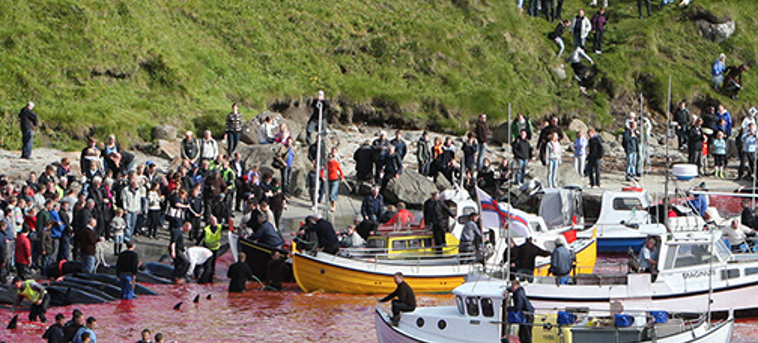
The drive and the slaughter
When a boat spots a school of pilot whales, it signals the find to others. Many boats then join together to drive the whales into a bay.
Usually the whales are spotted by chance close to the islands by someone who is either out fishing or on one of the inter-island ferries. Today, boats report the find by phone or wireless radio. In the past, the good news spread from village to village by shouts or smoke signals.
It is important that enough boats sail out to the school to be able to start the drive. The boats form a semi-circle behind the whales, and, following currents, they herd it to the most suitable bay for it to be beached.
In the Faroes there are 23 authorised whaling bays. The local chief of police must grant permission before the whales can be beached. If he does so, the foreman of the hunt decides which bay is most suitable.
According to tradition, the boat that spots the school of whales receives a finder’s whale as reward. However, the boat cannot claim its prize before the catch is completed.
When the whales have beached themselves, they are killed. It takes a few seconds to kill each whale, and the entire school is usually killed in less than ten minutes.
The pilot whale hunt in the Faroes is, by its very nature, a dramatic and bloody sight. Entire schools of whales are killed on the shore and in the shallows of bays. This naturally results in a lot of blood in the water.
FOOD
NATURAL
SUSTAINABLE
REGULATED


